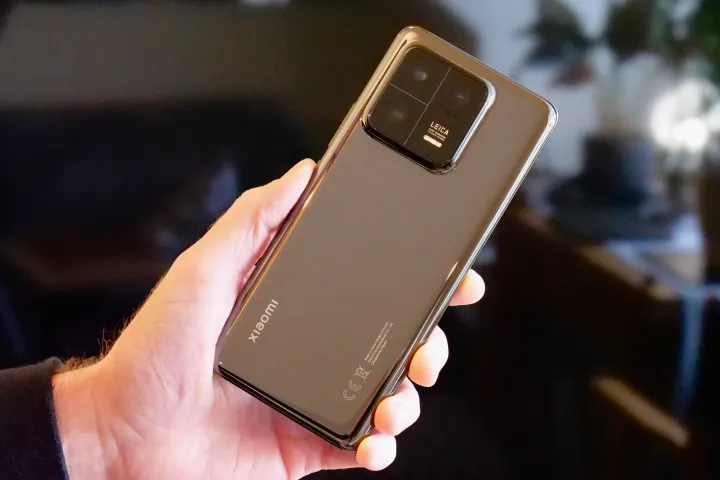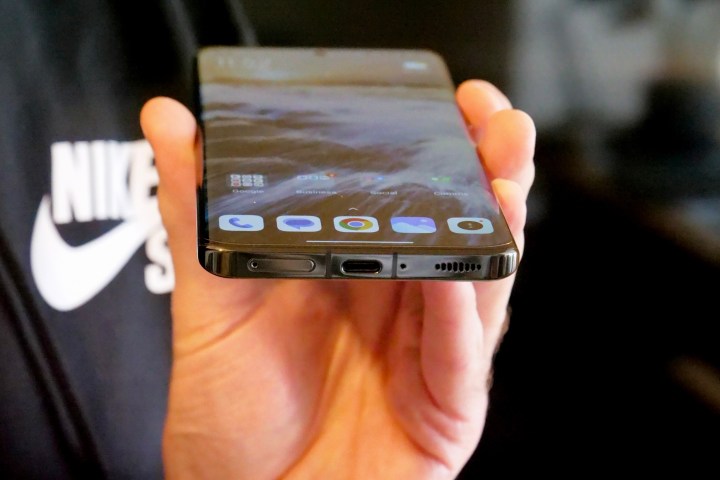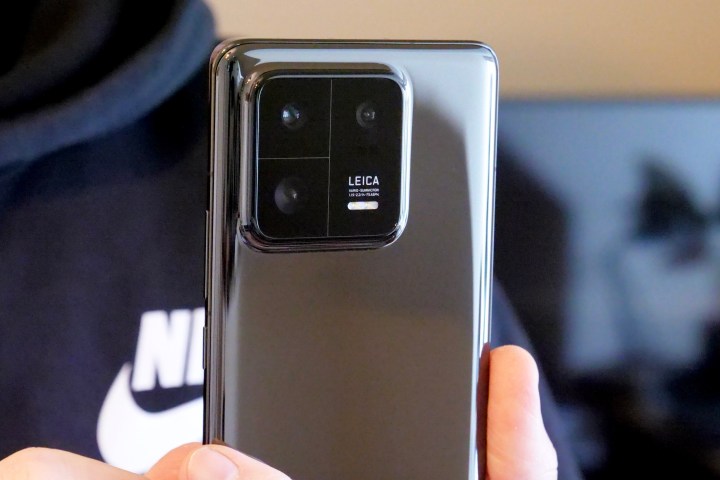The Xiaomi 13 Pro will be the brand’s first phone with a Leica-tuned camera to launch internationally — after it decided to keep the Xiaomi 12S Ultra for China only. Xiaomi and Leica teamed up last year after the famed camera maker parted ways with longtime collaborator Huawei, and that means there are big boots to fill.
More than that, the technical specification and design have to be strong enough to take on the excellent Samsung Galaxy S23 Plus, its biggest current rival, or the very similar OnePlus 11. We’ve used the phone for a few days prior to its announcement at Mobile World Congress (MWC) 2023 to see if it has the strength to crush the competition. Is the Xiaomi 13 Pro up to the task, or will the price scupper its chances?
Xiaomi 13 Pro: powerful specifications

Before we dig into the camera, what about the technology inside the Xiaomi 13 Pro? It uses the Qualcomm Snapdragon 8 Gen 2 processor and comes with 12GB of RAM, and either 256GB or 512GB of internal storage space. The screen is a big 6.73-inch AMOLED with a dynamic 120Hz refresh rate, a 3200 x 1440 pixel resolution, and a maximum brightness of 1,900 nits.
The 4,820mAh battery is recharged using the included 120-watt HyperCharge fast charger, or a 50W wireless charger. Wired charging is extremely fast, topping up the battery in just 19 minutes, according to Xiaomi. In our early tests, the HyperCharge charger took the battery from 3% to 50% in only eight minutes and on to 100% in 21 minutes. Try beating that with a Galaxy S23 or a Pixel 7. Only the OnePlus 11 is as fast. There’s also a 10W reverse charging system, which happily added charge to our Samsung Galaxy Buds Live and the new Xiaomi Watch S1 Pro, after the feature was turned on in the Settings menu.

There’s Android 13 with Xiaomi’s MIUI 14 software installed, plus dual speakers with Dolby Atmos, NFC for Google Pay, 5G connectivity, an IP68 water resistance rating, and Corning Gorilla Glass Victus over the screen and a bioceramic rear panel. The Xiaomi 13 Pro is every bit the flagship smartphone, challenging the Galaxy S23 Plus and the iPhone 14 Pro with its specifications.
Just like other phones I’ve used with the Snapdragon 8 Gen 2, the Xiaomi 13 Pro is a performance powerhouse. The software and camera are lightning-quick, and there’s no obvious heat buildup either. Running the 3DMark Wild Life Extreme stress test benchmark made the back warm to the touch, but nothing more than that. The demanding, 20-minute test took 11% of the battery, but with moderate use, it has lasted for two days between charges.
Xiaomi offers a sleek design, clunky software

Xiaomi has described the Xiaomi 13 Pro as having a minimalist design. It’s certainly free of visual garnish, and only comes in simple black or white colors, but this does make it a little dull to look at. The massive, square camera module protrudes by several millimeters and separates the three cameras with a line etched into the glass. Again, it’s simple, bordering on the ordinary.
The bioceramic back is smooth and warm, and the chassis has a pleasing curve to it, as does the screen. It’s comfortable to hold, but this is a seriously heavy phone. It weighs 229 grams, and that’s not far off from the giant 234-gram Samsung Galaxy S23 Ultra, so you are always aware of it in your pocket or hand. The thin volume and power keys aren’t especially ergonomic either. A transparent flexible case is included in the box, which should help it survive a short fall onto a hard surface.

Xiaomi’s MIUI 14 brings a lot of changes over MIUI 13, ranging from the ability to use huge Super Icons on the home screen to new animations, designs, and widgets. Unfortunately, the new virtual pet widget doesn’t seem to be available on the global version yet. MIUI is a busy piece of software with masses of customization, many system notifications, and questionable features to find. I don’t find it relaxing to use, and it forces different gestures on you immediately, including a split downward screen swipe, with the left showing notifications and the right showing the quick settings.
I find this frustrating, and while I’m sure there’s a way to change it somewhere in the settings, it’s not clear, and I don’t want to spend ages digging around for it — should it actually exist. For some, this uniqueness and the ability to tinker and play will be MIUI’s strength and appeal; for others, it will just feel complicated, different for the sake of it, and needlessly busy.
A promising camera with lots of potential

Inside the square module is a 1-inch, 50-megapixel Sony IMX989 camera (the same as the 12S Ultra), a 50MP wide-angle camera, and a 50MP telephoto camera. Leica supplies its Vario-Summicron lens for the main camera and optimizes the lenses on the other two cameras. Plus, there’s a pair of “photographic styles” — Leica Automatic or Leica Vibrant — that can be switched at any time in the app. Leica also tunes some filters, including one for black-and-white, plus it adds its own effects for the portrait mode.
The main and telephoto cameras have optical image stabilization, the telephoto camera provides a 3.2x optical zoom, and there’s up to 8K video recording. Other features include night mode, Pro mode, Supermoon mode, and Dual Video to shoot using two of the phone’s cameras at the same time.
I’ve not had long to try the camera out yet, but it’s looking good. The massive 1-inch sensor has a beautiful depth of field, and the overall tone is attractive. The main camera does have a tendency to oversaturate when using the Leica Vibrant setting, but it’s not a dramatic change, and many people will like the sharing aspect this gives photos. The telephoto camera is excellent, producing sharp and defined images from a distance.
The wide-angle camera is a little disappointing so far, with a softness to its images that may come from aggressive software enhancement, as well as a noticeably different tone from the main camera. It’s early days for my Xiaomi 13 Pro camera test, but it’s off to a promising start.
Xiaomi 13 Pro: price and availability
Xiaomi does not sell its smartphones in the U.S.. In the U.K. the Xiaomi 13 Pro will be available from March 14 and cost 1,099 British pounds, which is about $1,315. It will be available from Xiaomi’s own online store and through Curry’s and Argos retail stores. It’s solely available with 256GB storage space.
At this price, the Xiaomi 13 Pro faces a tough challenge. It’s more expensive than the Apple iPhone 14 Pro, the Samsung Galaxy S23 Plus, the Google Pixel 7 Pro, and the OnePlus 11. In some cases, it’s quite a considerable distance between the prices too, plus it’s only 150 pounds less than the Samsung Galaxy S23 Ultra. Price was always going to be a crucial part of the Xiaomi 13 Pro’s appeal, and the higher than expected price may hurt its chances of success.
The Xiaomi 13 Pro is ready to compete

The Xiaomi 13 Pro is distinctly a Xiaomi flagship phone. The design isn’t crazily eye-catching, but subtly serious instead. It’s hefty yet durable. The software won’t be for everyone, but it has the fastest processor available, and the camera shows a lot of promise. It hasn’t broken the mold and is another in a long line of models from the brand.
Sounds bad, doesn’t it? It’s not. By sticking with what it does best, Xiaomi continues to refine and perfect its top phone, and it really shows here. This is a mature, superpowerful smartphone with a camera partnership that, based on previous experience, could really produce something special over time. Plus, the battery charges at an astonishing rate.
It’s only through longer-term use the Xiaomi 13 Pro’s faults, or lack thereof, will show up — so we’ll reserve complete judgment until our full review in the near future. However, initial impressions show the Samsung Galaxy S23 and S23 Plus may have some serious competition here.












